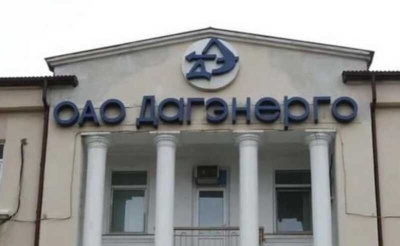“Kommersant”: the Belarusian “Santa Bremor” was left without Norwegian salmon for Russia
The Belarusian producer Santa Bremor has suspended deliveries of salmon to Russia under the Russian Sea brand. The company lost access to salmon farmed in Norway.
Over time, it may switch to Chilean or Russian redfish, experts say.
A major supplier of fish products to Russia, including under the Russian Sea brand, the Belarusian company Santa Bremor has suspended the supply of part of the assortment to retail chains. On online storefronts, in particular, salmon and trout “Russian Sea” disappeared from sale, writes “Kommersant”. The newspaper’s source in one of the networks said that the division of “Santa Bremor” reported the suspension of deliveries due to restrictions on exports from countries where salmon is grown.
Lenta reported that they received notifications from red fish product manufacturers about possible difficulties with shipments due to a lack of raw materials. The representative of the retailer clarified that now Lenta does not receive goods from the Russian Sea brand, but the situation may change in June. An interlocutor in another large network confirmed that the Russian Sea had a reduced assortment. He explained this by a significant increase in prices – because of him, the company’s products became unclaimed by customers.
“Santa Bremor” is included in the Belarusian GC “Santa” Alexander Moshensky. The group also includes Savushkin Produkt, a dairy products manufacturer, and the Santa supermarket chain. She is engaged in real estate, develops projects in the restaurant and hotel sectors, and others. The turnover of Santa, according to its own data, exceeds $2 billion. In 2013, Santa Bremor bought a fish processing plant in the Moscow Region from the structures of Maxim Vorobyov and Gennady Timchenko.
Chairman of the Fish Union Alexander Panin said that until recently, Belarusian producers of red fish products used salmon from Norway. Its import into Russia was banned by the 2014 food embargo, he recalled. After a new wave of sanctions, these supplies, like those of the Faroese salmon, were closed, Panin noted. According to the interlocutors of the newspaper, the Russian competitors of “Santa Bremor” are now working on raw materials from warehouse stocks.
Ilya Bereznyuk, Managing Partner of Agro&Food Communications, said that since 2014 domestic fish processors have learned to work with thawed salmon supplied from Chile. Wild red fish from the Far East, salmon from farms in Murmansk and trout from Karelia are also used as raw materials, he added. According to Bereznyuk, Russian processors will face a decrease in the supply of imported raw materials due to the withdrawal of the largest container lines from Russia and difficulties with payments for new deliveries.
Bereznyuk suggested that over time, Santa Bremor would be able to replace Norwegian salmon, including at the expense of Russian salmon. This will lead to a noticeable increase in costs and could negatively affect the company’s sales and market share, he warned. Panin noted that prices for Chilean salmon are at their peak, and problems with logistics through Europe do not contribute to the desire to buy it.
According to the reports of the Chilean red fish producer Salmones Camanchaca, the average world prices for Atlantic salmon in the first quarter of 2022 increased by 34% year-on-year, to $6.77 per 1 kg. “Importers’ stocks are already running low. In the near future, we will make do with Russian farmed salmon and a small amount of imports,” Panin expects.
Ilya Sosnov, General Director of Russian Aquaculture, said that the company continues to supply fish, but in May-September there is traditionally low demand for it, so sales are small. He did not notice a decrease in demand – the results are generally in line with the business plan. “Russian Aquaculture” in the report for 2020 estimated the volume of the Russian red fish market at 114,000 tons, of which 99,000 tons are imported salmon.

 Гастроэнтеролог Белева объяснила, почему с возрастом приходится менять рацион
Гастроэнтеролог Белева объяснила, почему с возрастом приходится менять рацион
 Публичная «порка» депутатов новосибирского Заксобрания: где деньги, Зин?
Публичная «порка» депутатов новосибирского Заксобрания: где деньги, Зин?
 Звезда «Счастливы вместе» Наталья Бочкарева с трудом проявляет строгость к детям
Звезда «Счастливы вместе» Наталья Бочкарева с трудом проявляет строгость к детям
 36 дагестанских энергетиков запутались в "Россетях"
36 дагестанских энергетиков запутались в "Россетях"
